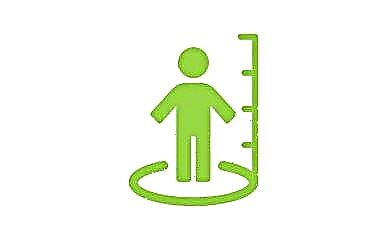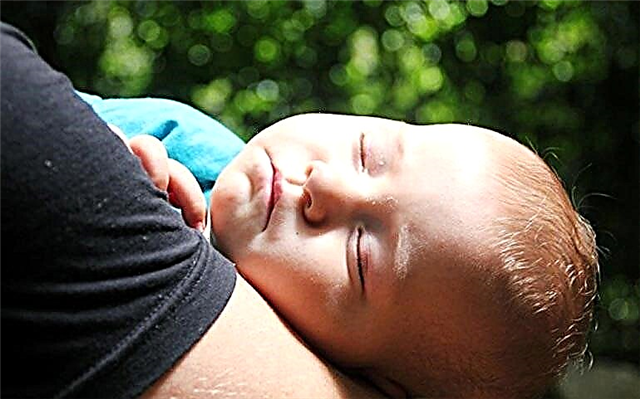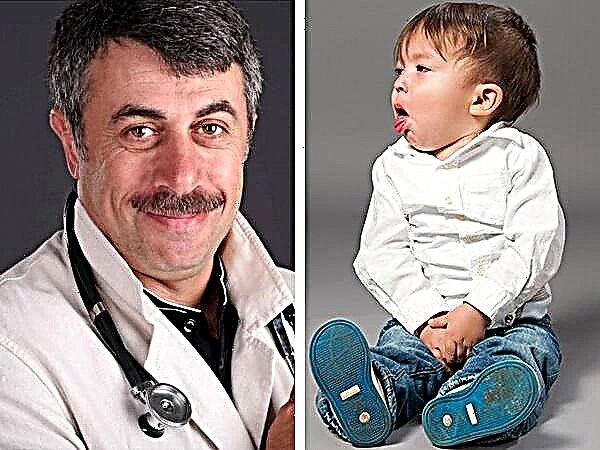At 8 months, the child's active physical, emotional and social development continues. Let's find out what else a baby should learn at 8 months.
Eight months is the age of active space exploration and new games. By this age, daytime dreams are reduced to 2 times 1.5-2 hours each, the baby is awake much longer. Many babies by 8 months have several teeth, although in this regard there are no rigid norms.

At 8 months, the child already knows a lot of new things. The kid becomes active, agile and inquisitive. Weight gain is slowing down in comparison with the first months of life, many mothers even note that the child is more stretched in height and looks thinner, this is due to an increase in the child's physical activity. Every day the baby learns something new. The muscles of the child are already developed so that they allow him not only to roll over and sit, but also stand and crawl.
Eight month old baby skills
- Eight-month-old babies are already good and crawl a lot. Crawling "on bellies" develops into full-fledged movement on all fours. At this age, children are able to crawl at any distance and devote most of their time to this activity. At 8 months, the baby crawls all over the house, and does it pretty quickly. It is very important that the space that the "slider" is actively exploring is safe. It is better to remove wires and extension cords from the floor, and all dangerous objects from the accessibility area as a whole. During this period, the trash bin, bowls of pets "move" to a higher level, since the kids show great interest in these objects;
- The child begins to exercise and keep his body upright. Usually, babies begin to sit down on their own from all fours, so when crawling becomes an easy and familiar thing for a child, he tries new actions. The child does not know how to keep his body in a sitting position at 8 months. Usually, children do not sit for more than 3-5 minutes. Sitting down the baby is still not recommended, especially on a soft surface or in pillows;
- Another vertical position is standing, and the baby also tries it around 7-8 months. Standing at a support is one of the favorite activities at this age. The child crawls to an object on which to lean, grabs with his hands, stands up, but within a minute, as a rule, falls on the bottom. Most often, a sofa, bed, chairs, armchairs act as a support. Some people know how to move along the sofa or bed with a side step. For the baby, this is a kind of exercise and training, during which the legs and back are strengthened. It is not worth interfering in this process and inviting the baby to stand more often than he himself tries to do it. Excessive vertical stress on the spine and joints at an early age can result in problems with the musculoskeletal system as the child grows older (the most common consequence of early standing on the legs is curvature of the spine). It is imperative to ensure that only stable, safe objects are at hand for the child as support;
- Hand motor skills continue to develop. The main innovation of the eight-month-old is the appearance of the so-called "tweezers grip": the baby begins to take objects not with all his hands, but with the help of his thumb and forefinger. This is the most important skill and a vivid indicator of the development of the psyche. Now the baby is able to perform more subtle actions, take small objects;
- New skills are also emerging in the field of object manipulation. Not only should a child be able to pick up, hold and release an object at 8 months. At this age, children also know how to specifically throw what is squeezed in the handle. The favorite fun of all kids is to throw toys out of the crib or playpen. As we remember, toys must be returned;
- Another innovation is related actions with objects. Now the baby can not only take turns taking toys and examine them, but also perform certain actions with one toy relative to another. These can be attempts to put one toy on top of another, to knock on it, to change places. If there is a container in front of the baby, he will try to put everything that comes into his field of view into it. It is correlative actions that underlie the ability to assemble a pyramid, to select the correct inserts for Seguin boards, so such games should be encouraged;
- In the speech sphere, significant shifts are also noted. The babbling of the child already has an intonation that he has adopted from his parents. The baby repeats the same syllables many times, so the parents constantly hear from him "ma-ma-ma" or "ba-ba-ba". The main task at the age of 8 months is to accumulate a passive vocabulary, that is, words whose meaning is clear to the child. Active speech at this stage is still manifested in the form of syllables and their combinations, but the child begins to better and better understand the speech he hears, begins to react not only to the emotional coloring of speech, but also to the meaning of what was said. This is especially noticeable at the request of the baby. On request, the child can submit the desired toy or show a picture of an animal already known to him in a book. In addition to fulfilling the requests of an adult, the child already knows how to react to warnings and prohibitions, which is especially important because of the irrepressible thirst for knowledge;
- The social development of the baby is at a critical point. The fear of strangers, which appears around 7 months old, is still very pronounced. The child refuses to be in the arms of unfamiliar people and is very frightened if the mother disappears from view, even if she just went to the next room. Parents may find this behavior of the crumbs strange, and representatives of the older generation often say that such whims and crying are the result of “hand training”. In fact, this is a completely normal stage in the development of attachment, it is absolutely useless to ignore it or, even more so, somehow struggle with such behavior of the child. On the contrary, the task of parents is to be responsive to the needs of the baby, to let him know that he is safe, his mother is there and will always protect him.
IMPORTANT: how to secure a home for a child

Usually mothers have no difficulty in occupying something and captivating an eight-month-old baby. The kid himself shows great interest in everything that is around, plays actively. You can get creative and offer your baby pencils or finger paints. Multi-colored footprints and prints on paper will certainly interest the baby.
Let's summarize: what a child should be able to do
Although all children develop in their own rhythm, there are certain skills by the presence of which the degree of development of the baby is assessed. Average norms - what a child should be able to do at 8 months:
- play up to 10 minutes on your own;
- crawl in accessible ways (most often on all fours);
- try to get up, holding on to the support;
- from a standing position to sit on the ass (or fall on the ass);
- take steps holding the hands of adults;
- sit down on their own, rolling over from the back, tummy, helping themselves with the arms;
- sit for a few minutes;
- drink from a cup, eat from a spoon;
- eat small pieces of food (cottage cheese, cheese, cookies);
- grab small objects, transfer from one hand to another;
- take small things with your thumb and forefinger;
- recognize parents;
- crawl with a toy held in one hand;
- show yourself in the mirror, recognize in the photo;
- wave goodbye.
Should alert
There are skills that a child must certainly have at 8 months. If your baby has any of the following points, you need to see a doctor:
- Does not sit down;
- Does not crawl backwards or does not try to crawl at all;
- Doesn't try to get up at the support;
- Cannot stand for several seconds, holding on with both hands;
- Cannot hold a toy in his hands;
- The suggested toy is missing;
- Does not transfer a toy from one handle to another;
- Doesn't pronounce syllables;
- Doesn't listen when he hears an adult talking;
- Doesn't show any emotion.
If your child is not able to do something from the listed list, you should pay attention to his development and consult a pediatrician.
Everything that a child can do at eight months is the basis for the subsequent development of more complex skills, actions and manipulations.
- Previous month: What a child can do at 7 months
- Next month: What a 9 month old baby can do



